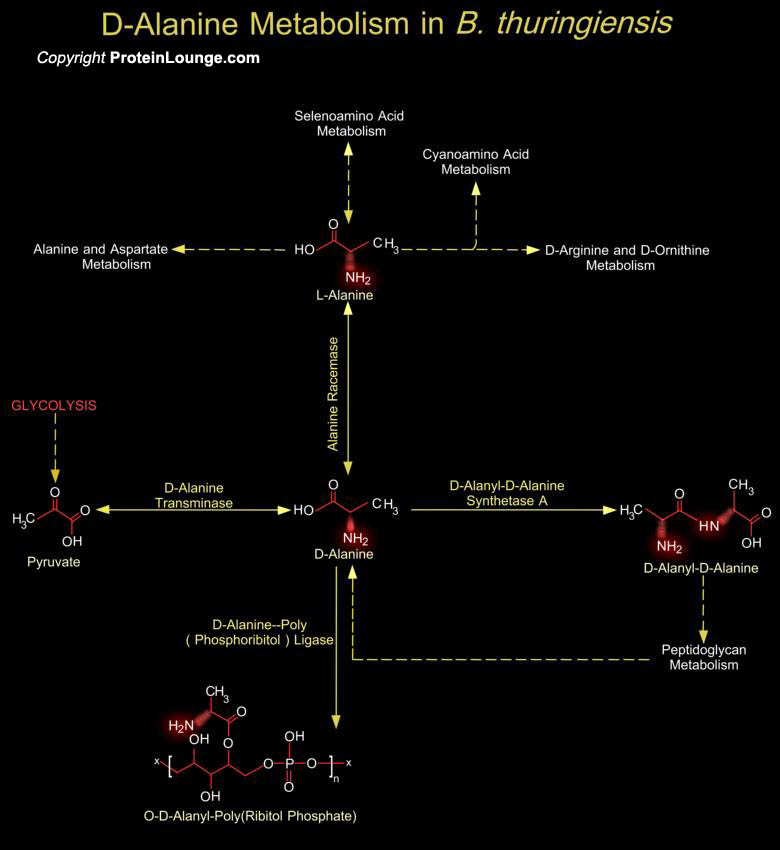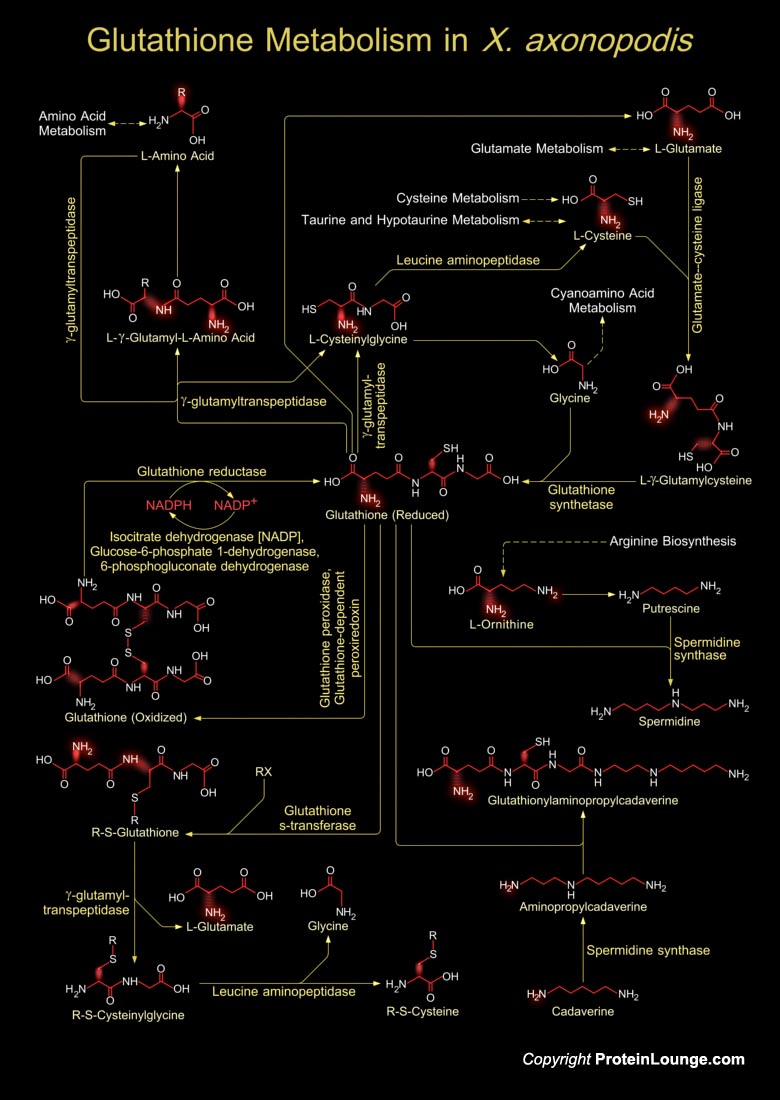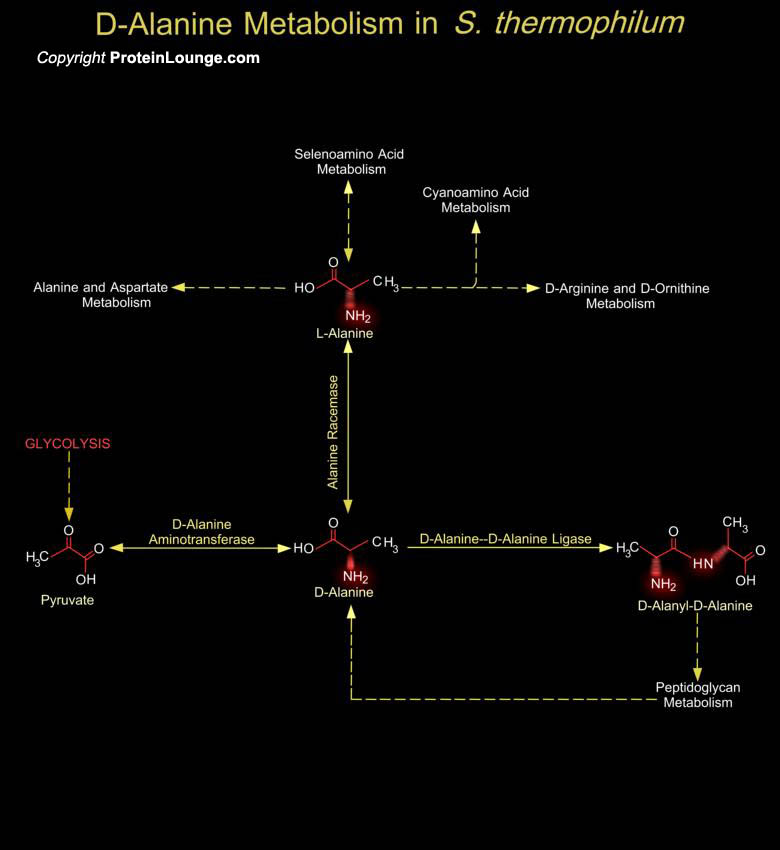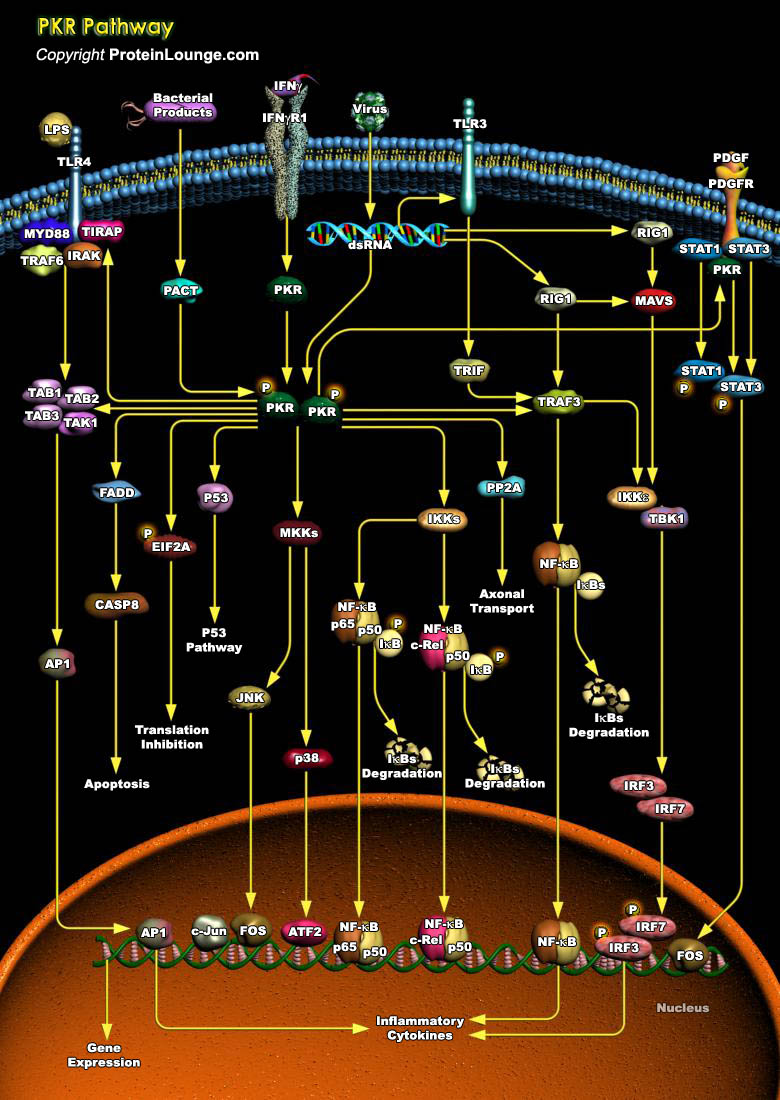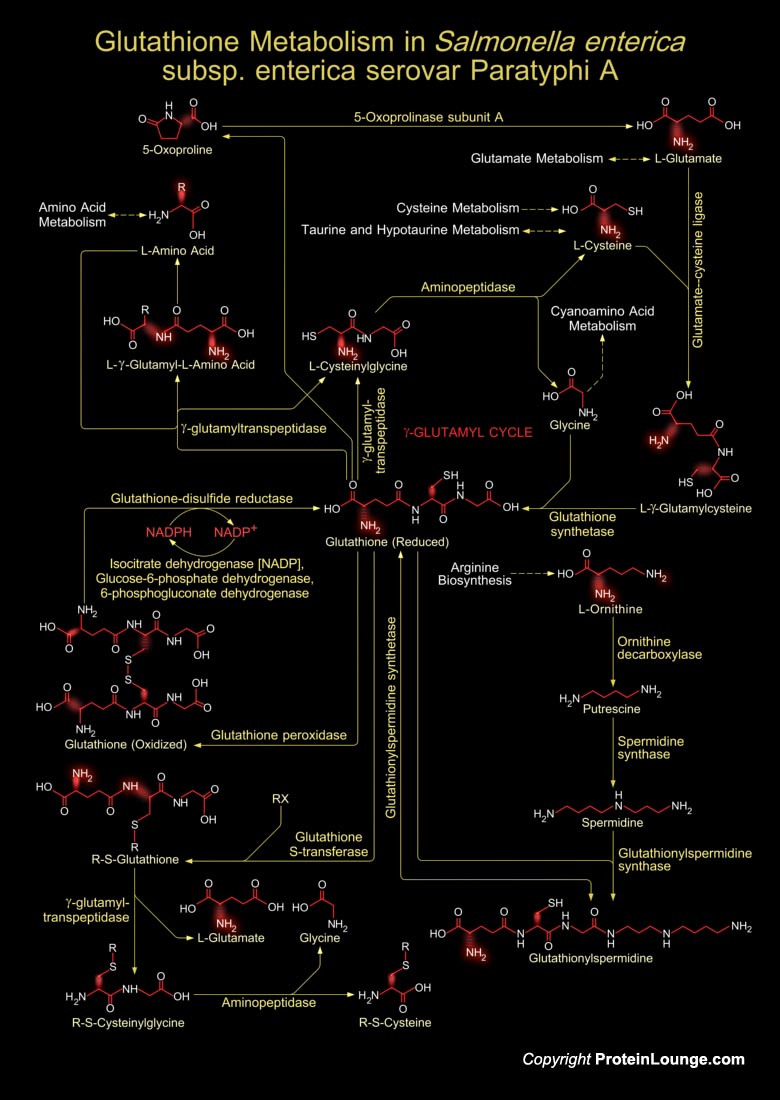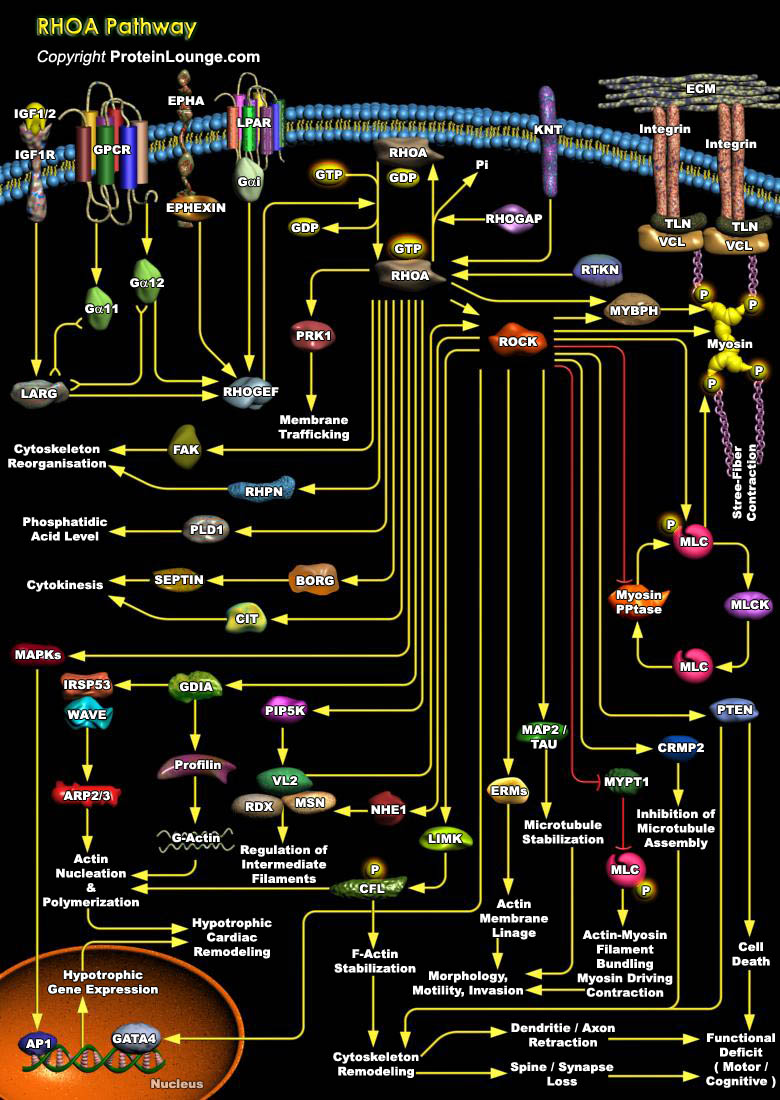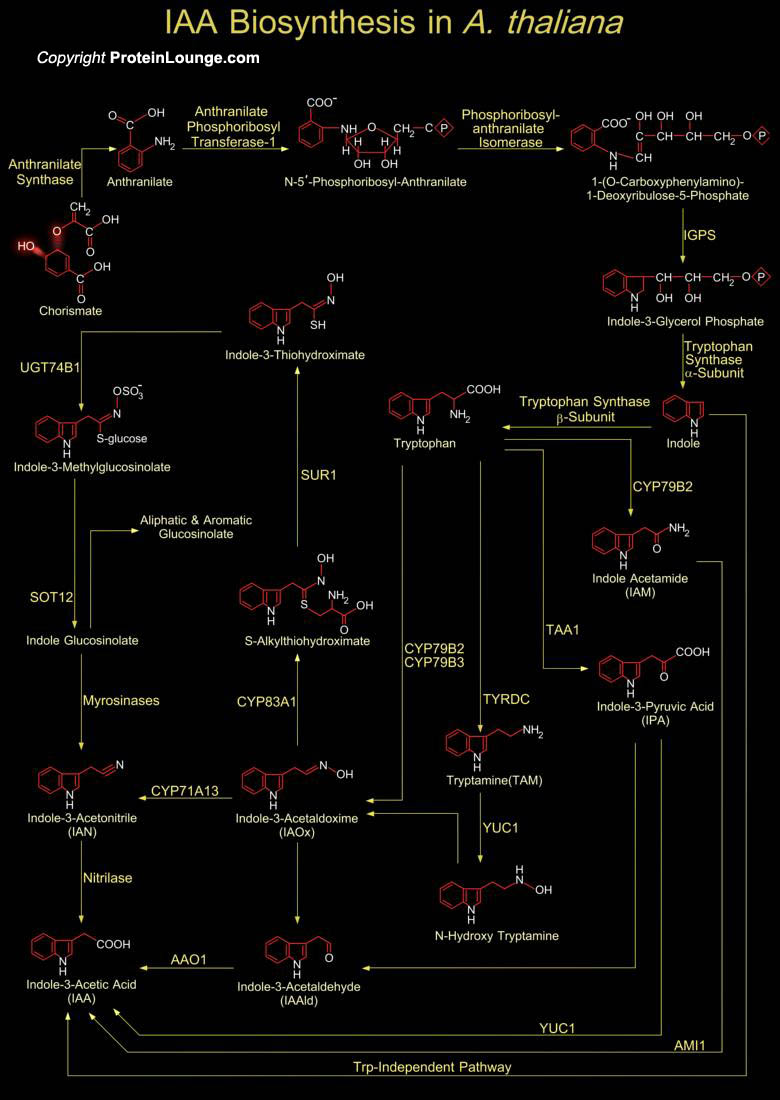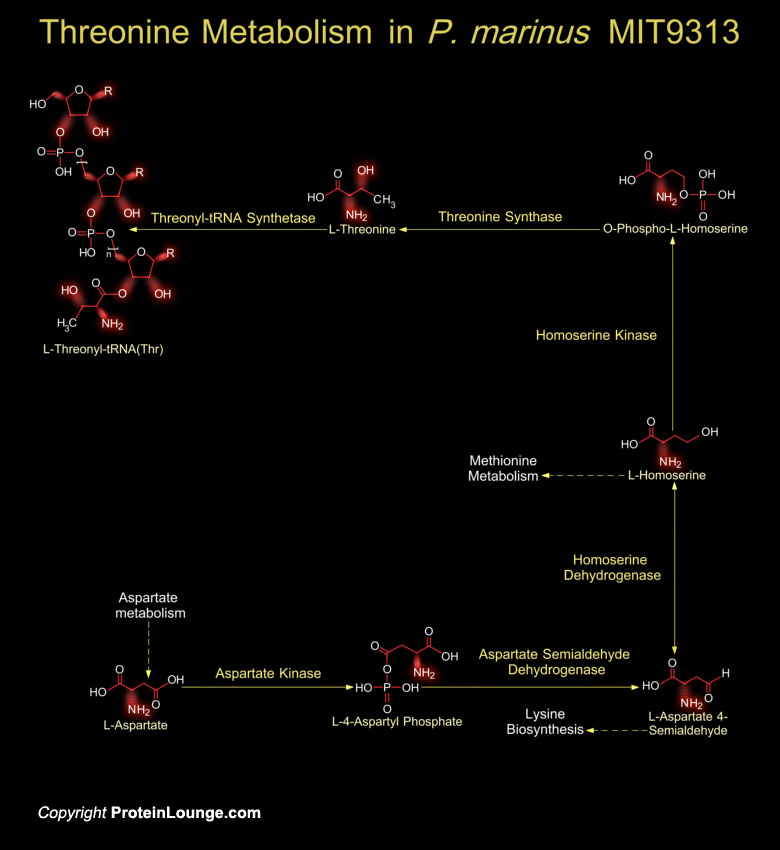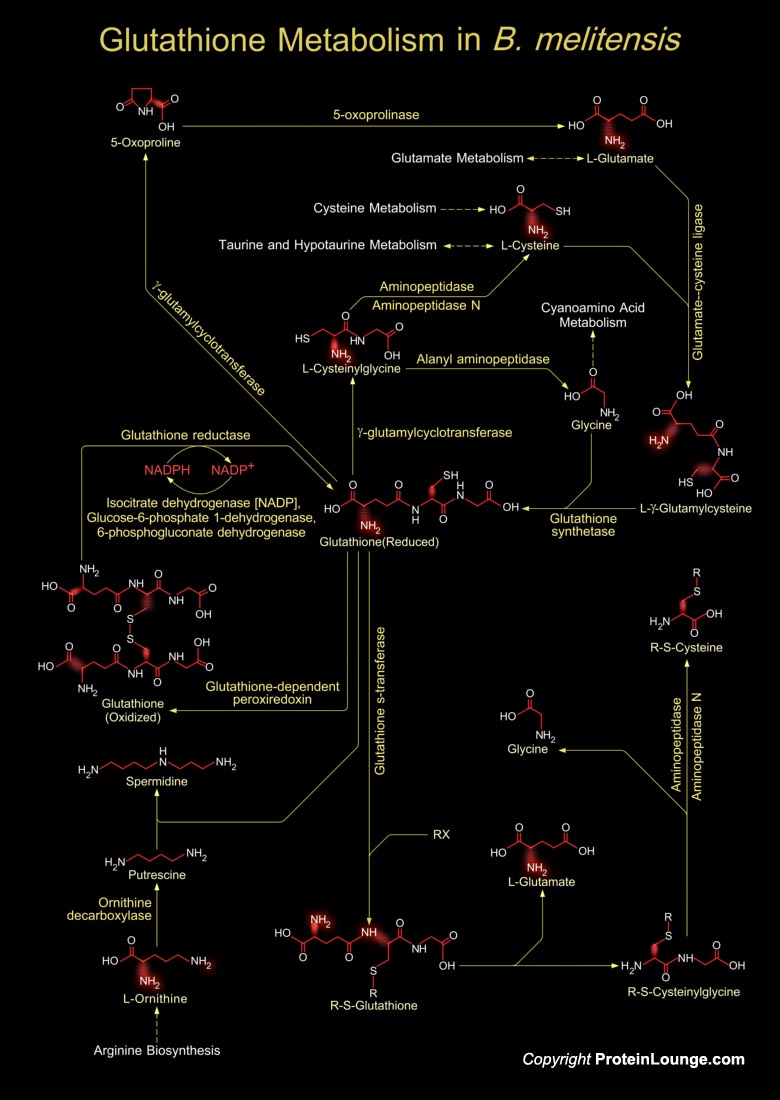Featured Pathways
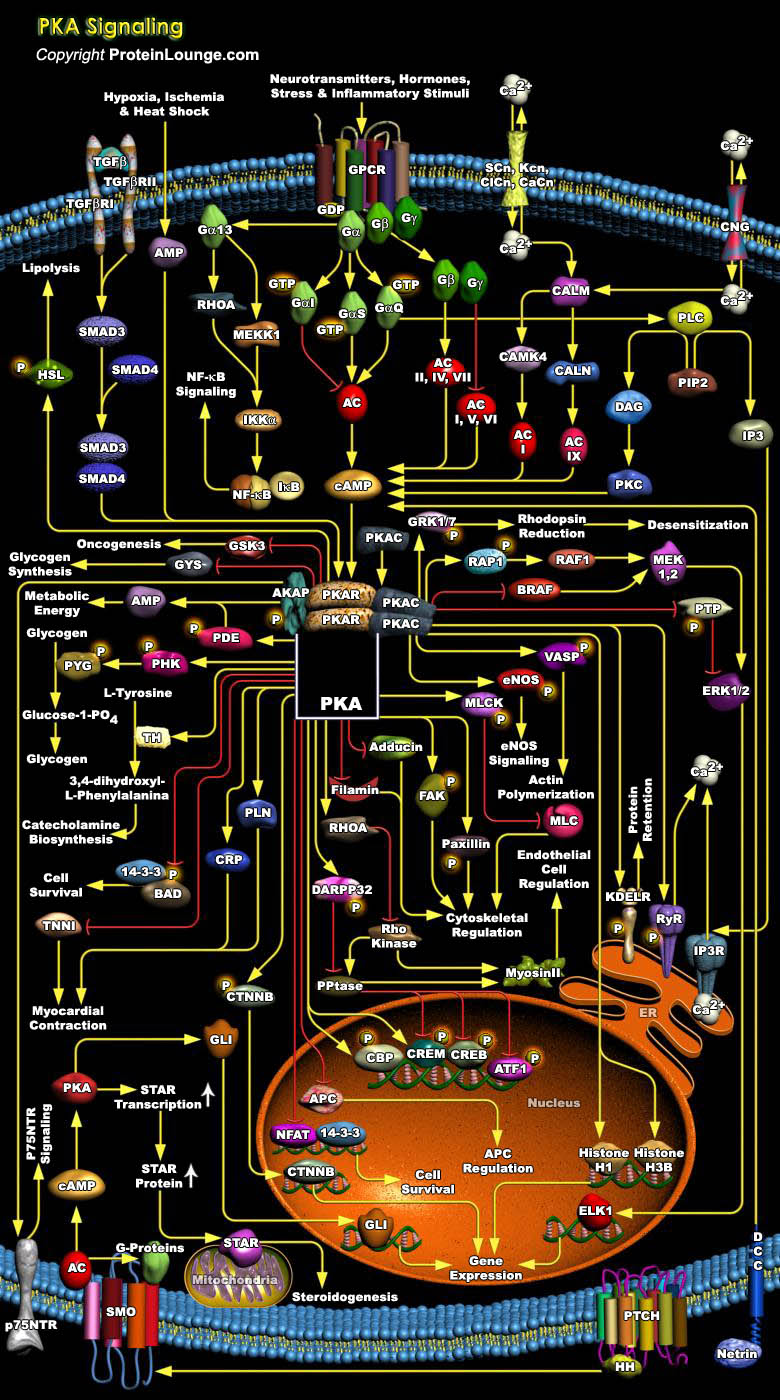
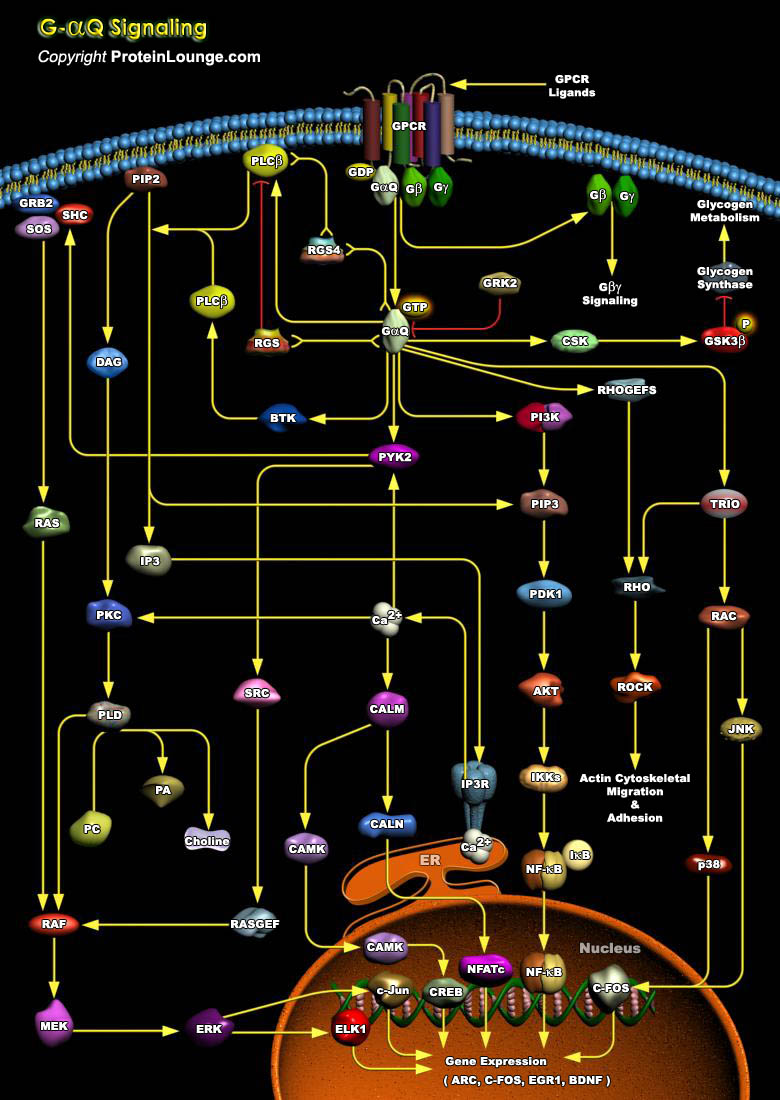
GPCR (G-Protein-Coupled Receptors) constitute a large and diverse family of proteins whose primary function is to transduce extracellular stimuli into intracellular signals. They are among the largest and most diverse protein families in mammalian genomes. Also termed Serpentine receptors, GPCRs are polytopic membrane proteins that share a common structure with seven transmembrane segments,[..]
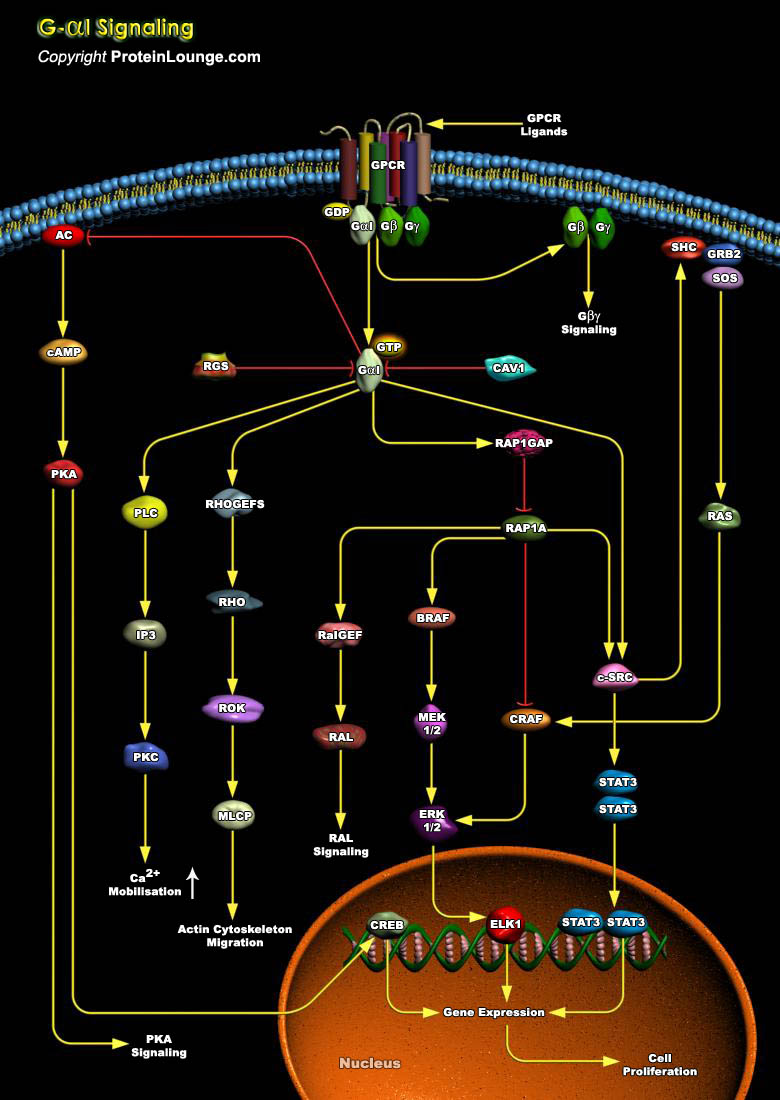
The heterotrimeric G-Proteins (Guanine nucleotide-binding Proteins) are signal transducers that communicate signals from many hormones, neurotransmitters, chemokines, and autocrine and paracrine factors. The extracellular signals are received by members of a large superfamily of receptors with seven membrane-spanning regions, known as GPCR (G-Protein Coupled Receptor), that activate the[..]
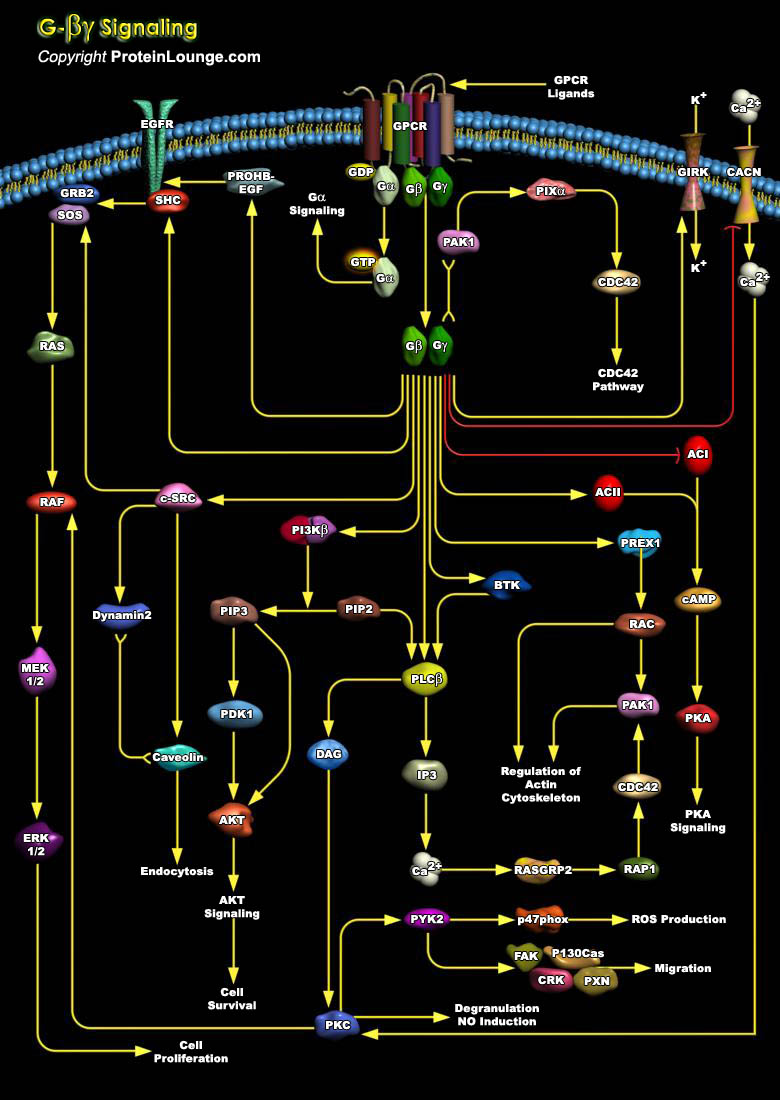
G-proteins (Guanine Nucleotide-Binding Proteins) are heterotrimeric proteins that mediate signal transduction between many membrane-bound receptors and intracellular effectors. Traditionally, activation of heterotrimeric G-proteins is accomplished exclusively by the action of GPCRs (G-Protein Coupled Receptors), Seven transmembrane-spanning proteins that typically reside in the Plasma[..]
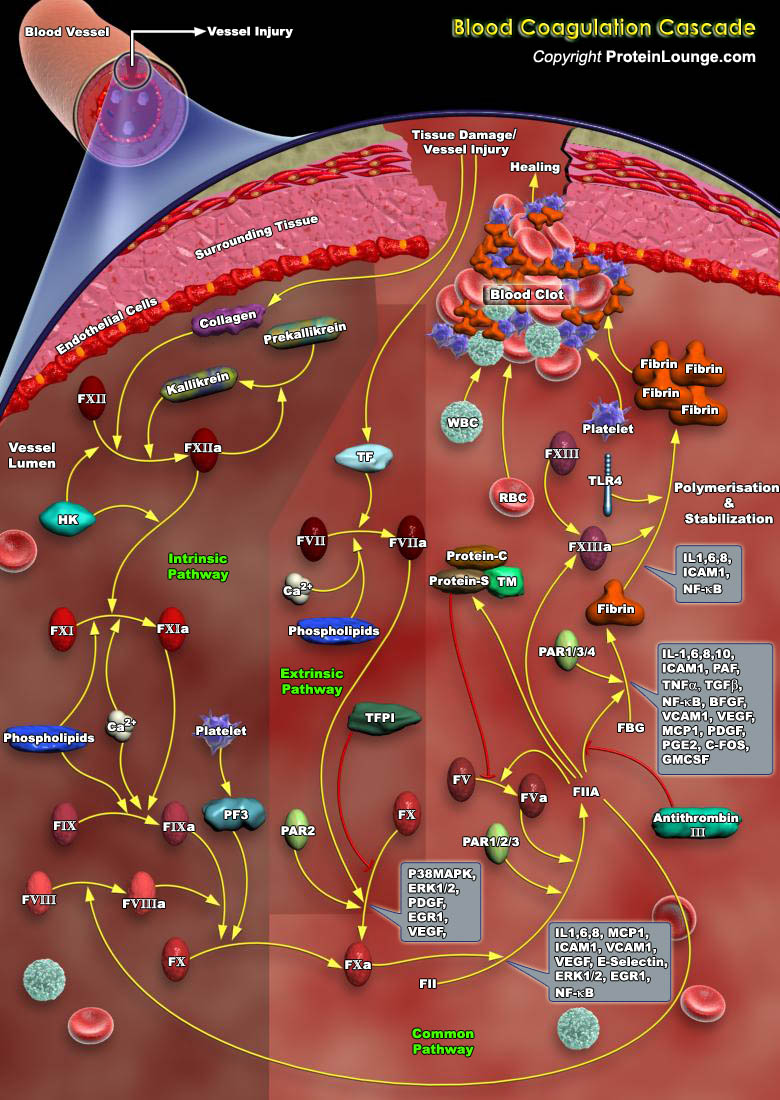
Coagulation is a dynamic process which involves the regulated sequence of proteolytic activation of a series of zymogens to achieve appropriate and timely haemostasis in an injured vessel, in an environment that overwhelmingly favours an anticoagulant state [Ref.1 & 2]. There are two main mechanisms for triggering the blood clotting, termed as the contact pathway/intrinsic pathway and the tissue[..]
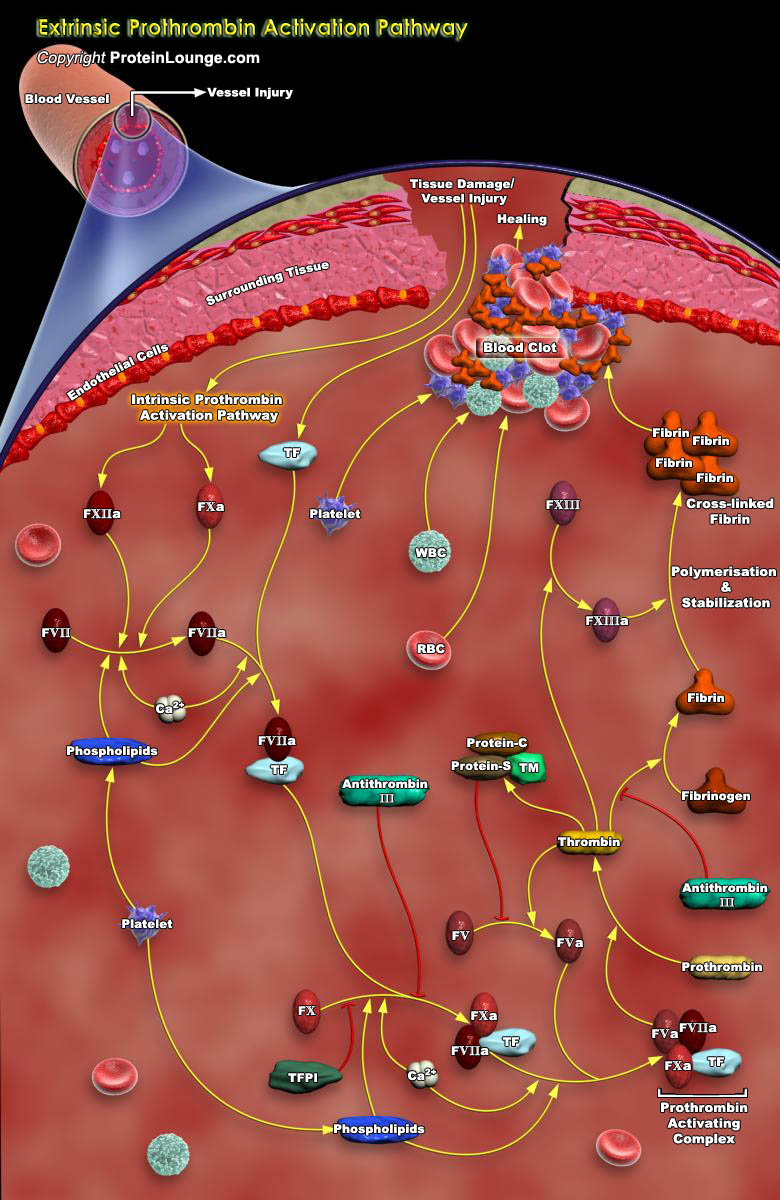
Thrombin/TFIIa (Activated Factor-II) is a coagulation protein that has many effects in the Coagulation cascade, the homeostatic process of greatest interest. It is a multifunctional serine proteinase best known for its ability to cleave Fibrinogen to Fibrin. Fibrin forms an essential component of the Blood Clot. When a blood vessel is injured, bleeding is stopped by clotting factors which[..]
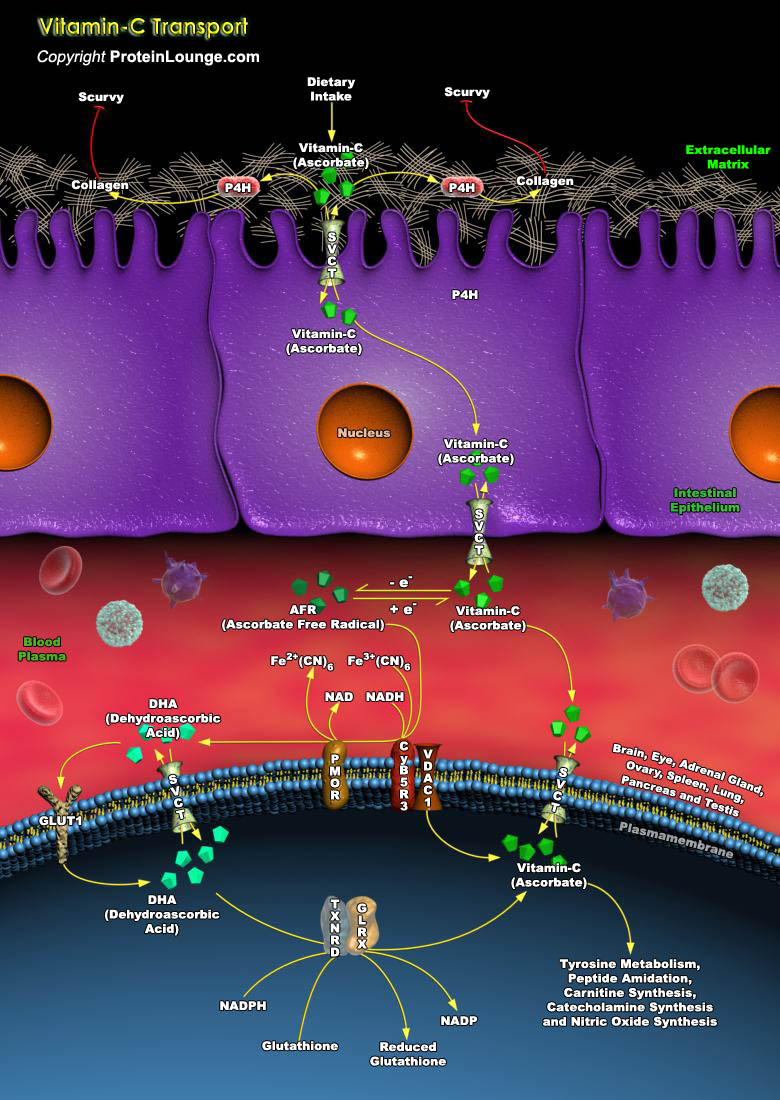
Vitamin-C (Ascorbate or Ascorbic Acid) is an essential water-soluble Vitamin, well known for its antiscorbutic and antioxidant functions in humans. Vitamin-C was first identified by virtue of the essential role it plays in Collagen modification, preventing the nutritional deficiency Scurvy. Vitamin-C acts as a cofactor for the P4H (Prolyl[..]
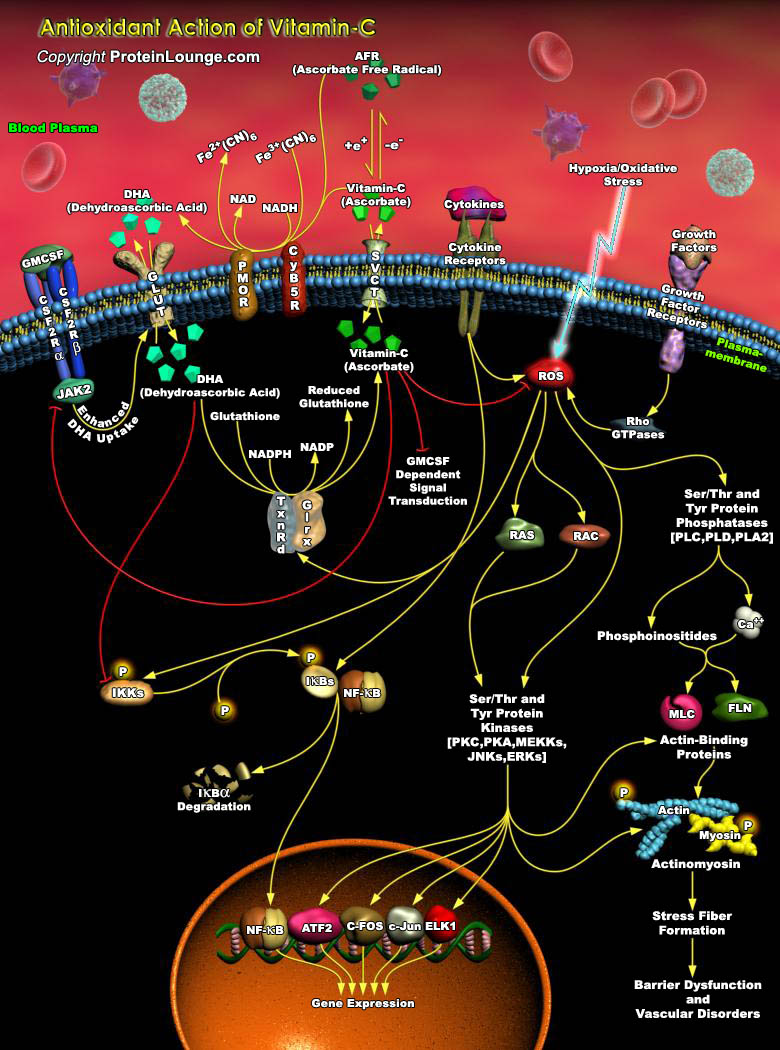
Oxidative stress/Hypoxia is induced by a wide range of environmental factors including UV stress, pathogen invasion (hypersensitive reaction), oxygen shortage, etc. Generation of ROS (Reactive Oxygen Species) is characteristic feature of such stress conditions. Of the ROS, both Hydrogen Peroxide and Superoxide are produced in a number of cellular reactions and by various enzymes such as[..]
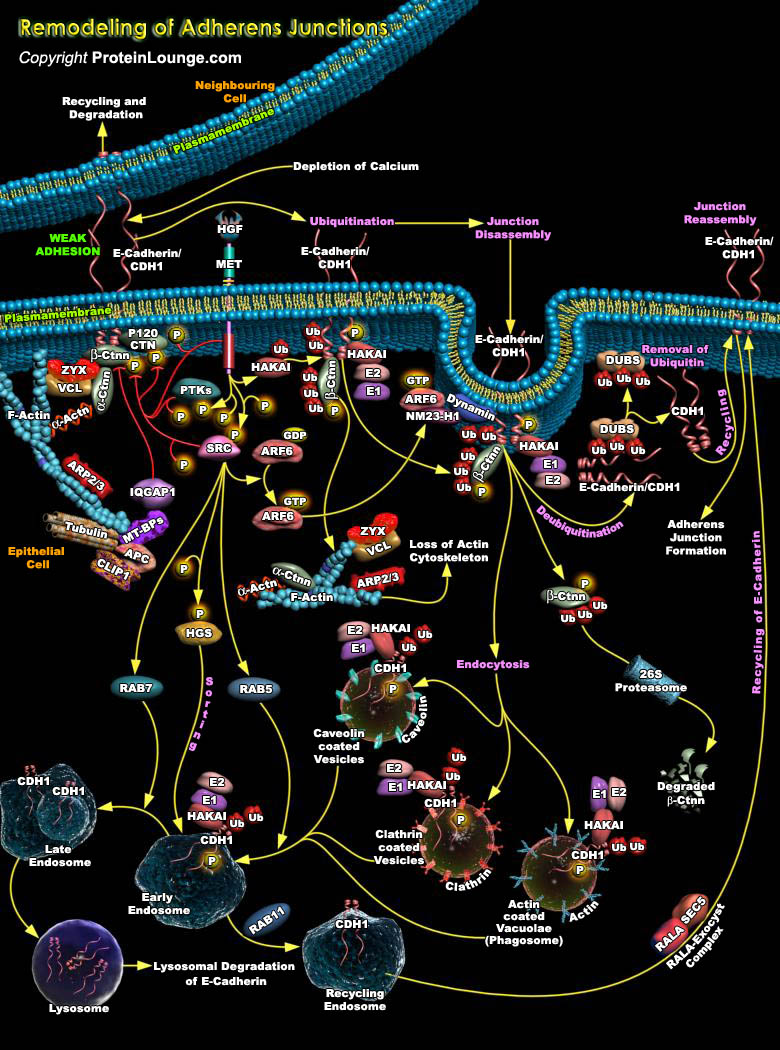
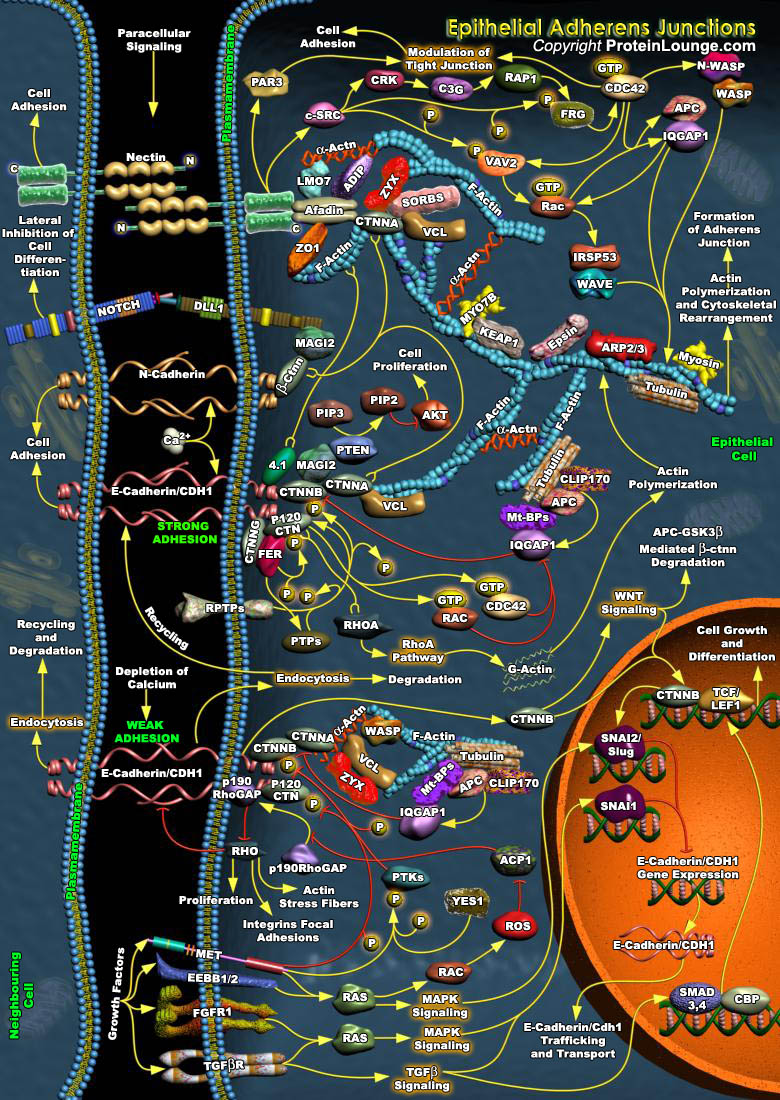
Adhesion between neighboring epithelial cells is a crucial and tightly controlled process. The integrity of cell-cell contacts is essential for the regulation of electrolyte absorption and for the prevention of tumor metastasis. In polarized epithelia, specialized structures such as Adherens Junctions (AJs) and Tight Junctions (TJs) are responsible for the establishment of contacts between[..]
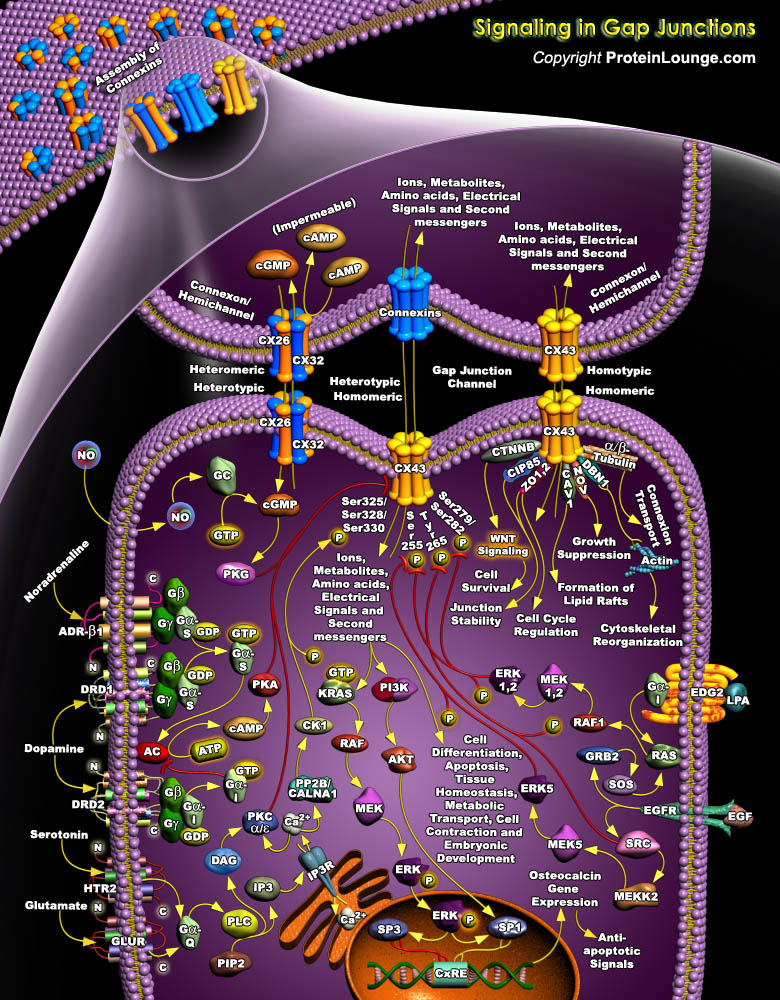
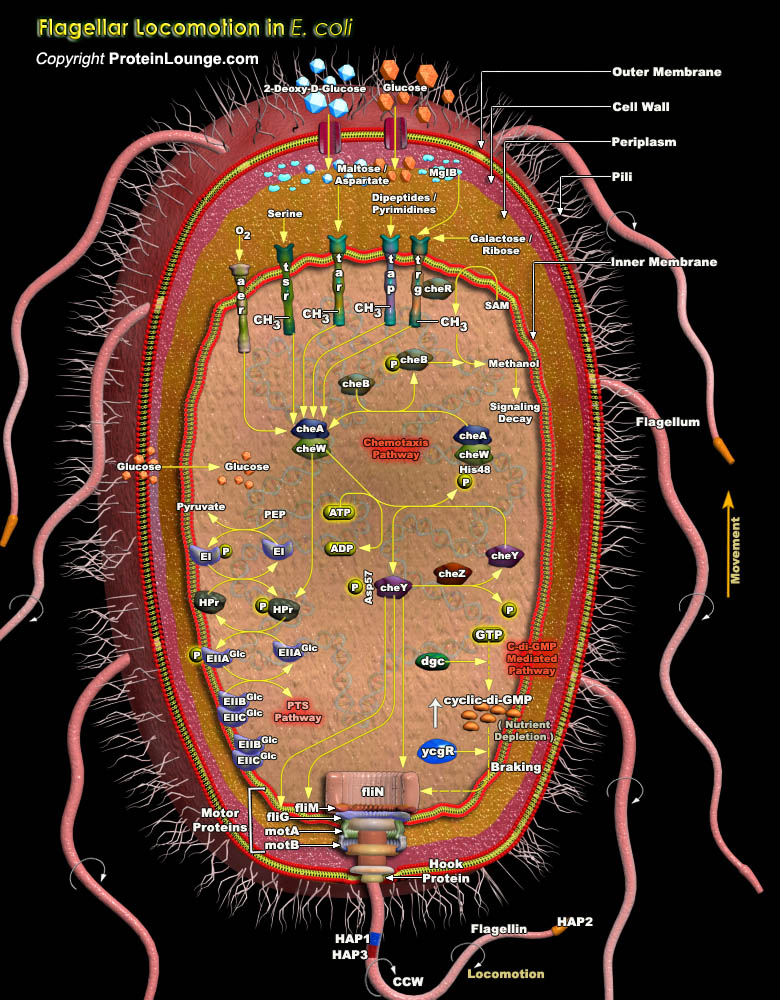
In an ever-changing environment, it is essential that organisms are able to sense these changes and to respond appropriately. Possible responses include alterations in gene expression and/or active movement towards or away from an environment. Most sensory pathways in eukaryotic organisms rely on serine, threonine or tyrosine protein kinases, whereas the most common sensory pathways in[..]










